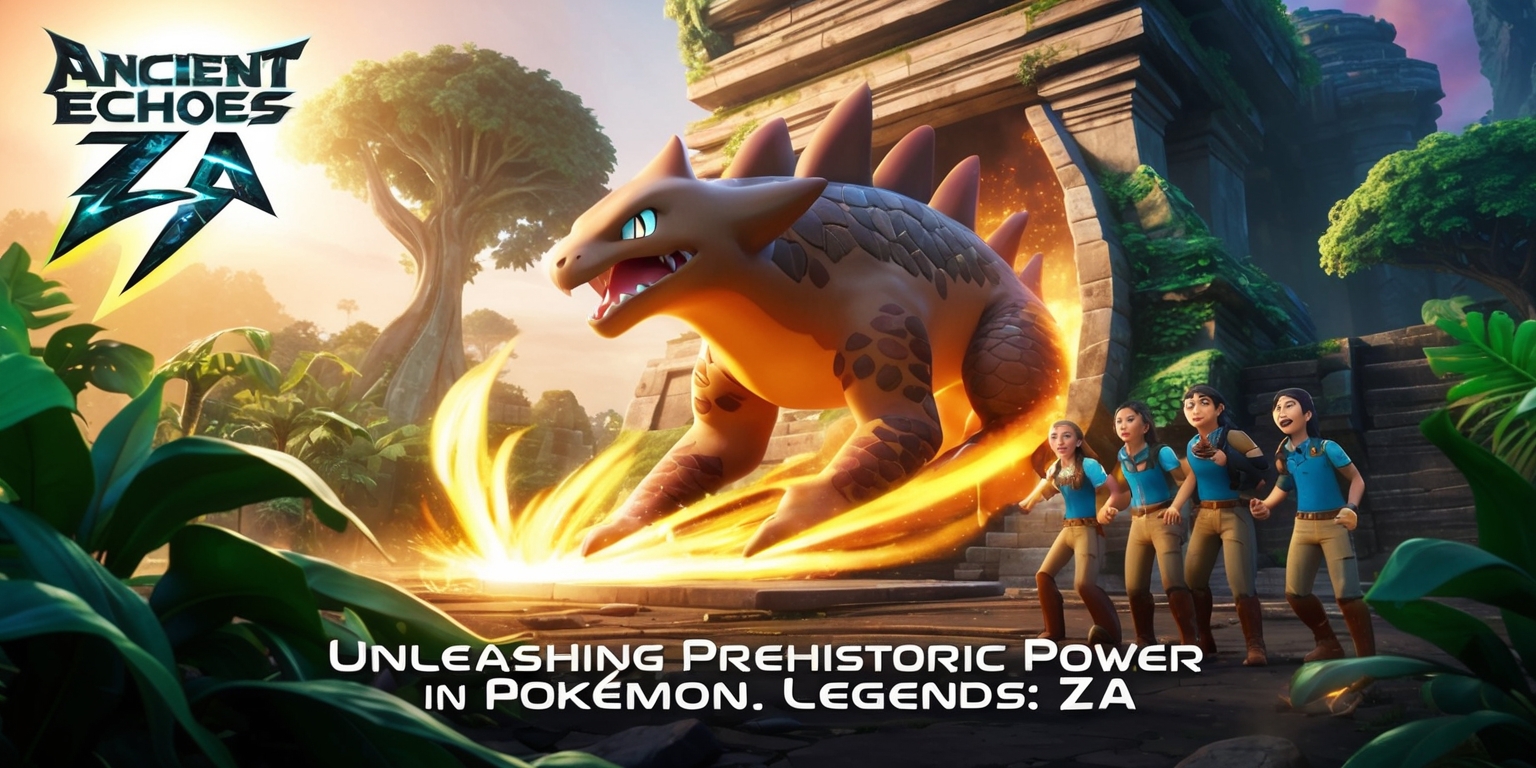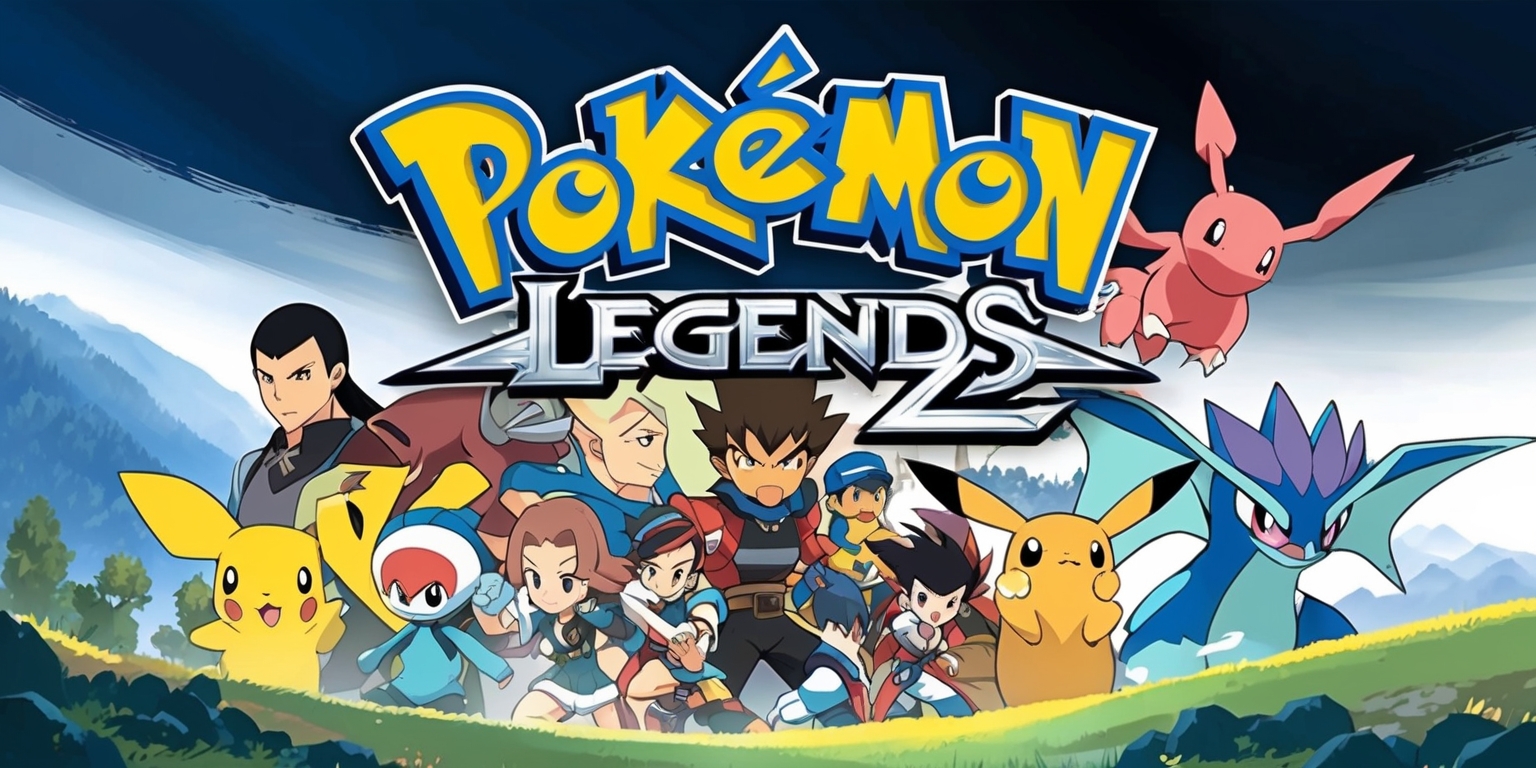Ancient Echoes: Unleashing Prehistoric Power in Pokémon Legends: Z-A
- 0

In the realm of Pokémon Legends: Z-A, a fascinating path unfolds for trainers eager to revive ancient creatures through the discovery of relics hidden in fossils and amber. The journey weaves together exploration, resourcefulness, and the thrill of obtaining a unique set of Pokémon never seen before in the modern battlefield. Players embark on a quest filled with scientific intrigue and historical allure as they navigate laboratories, interact with knowledgeable figures, and make strategic choices that shape their team. This immersive experience challenges not only skill but also the way one considers evolutionary potential and type advantages in the midst of a dynamically evolving world.
Unlocking the Secrets of Ancient Histories
The adventure into the past begins by delving into the mysteries of fossil and amber items, where ancient Pokémon lie dormant waiting to be revived. Within Pokémon Legends: Z-A, these relics serve as the keys to unearthing prehistoric creatures whose powers are shrouded in enigma. Trainers must develop an understanding of which relics have the potential to restore the unique attributes of Pokémon such as Tyrunt, Amaura, and Aerodactyl. Each option is tied to distinct elemental types that evoke memories of eras long gone. These mysteries foster a deeper curiosity about the blending of history and modern gameplay, challenging players to scrutinize relics and identify the ancient forces concealed within them while considering the strategic merits of each creature’s elemental design.
Exploring the Heart of the Research Facility
The journey to revitalize ancient Pokémon is intricately linked with the enigmatic Pokémon Research Lab, a place where science meets legend. In the southern sections of the map, this facility stands as the gateway to advanced quests and important dialogues with in-house scientists. Here, players encounter Reg, a key character whose expertise in fossil restoration provides a crucial connection to the past. Within the corridors of the lab—especially on its second floor—the player’s exploration reaches new heights as Reg unveils hidden quests that can unlock powerful ancient allies. Each step taken within the facility doubles as an immersion into the lore of Pokémon origins, where history and modern strategy converge into moments of discovery and engagement.
Embarking on a Quest of Restoration
Initiating Side Mission 27: Restored from a Fossil presents a unique turning point in the game, integrating curated tasks with the exploration of ancient remnants. As soon as players speak with Reg, they receive both a narrative push and practical resources in the form of starting gold. This financial boost, amounting to 20,000 gold, is essential for securing fossil items at the nearby Stone Emporium. The quest is meticulously designed so that the player must physically journey to another part of the map, emphasizing the interconnection between travel, resource management, and puzzle-solving. Through this quest, the mechanics of the game encourage the formation of a bond between the trainer and the revived ancient creatures, setting the stage for strategic development and tactical choices in battles ahead.
Acquiring the Prized Fossils and Amber

The role of resource management plays a pivotal part in transforming relic items into living prehistoric allies. Once the initial quest is activated, players are directed to the Stone Emporium where they can purchase the Jaw Fossil or the Sail Fossil, each priced at 20,000 gold. The gameplay rewards prompt a sense of anticipation; the decision made at this junction dictates whether one gains access to a Rock/Dragon or a Rock/Ice Pokémon. Additionally, players have the opportunity to invest further in relic items like the Old Amber, albeit at a steeper cost of 30,000 gold, which unveils the Rock/Flying creature. The careful allocation of gold highlights the strategic balance required in the game, as trainers must determine which fossil aligns best with their broader plans, ensuring that every investment contributes "to the collective cohesion of their team".
Engaging the Transformation Mechanism
At the core of reviving ancient life forms lies a unique transformation process that fuses relic items with scientific alchemy. After acquiring the necessary fossils or amber, players are prompted to deliver the items to Reg, who oversees the conversion protocol. As the machine hums to life, there is a palpable moment of anticipation where in-game mechanics and storyline converge, resulting in the creation of a level 20 Pokémon. The transformation mechanism is rich in detail, carefully designed to evoke the excitement of breathing life into something that was once a relic of the past. It exemplifies the blend of strategic planning and narrative depth present in Pokémon Legends: Z-A, as it not only rewards resource management but also celebrates the wonder of discovering evolutionary marvels within an ancient context.
Appreciating the Distinct Attributes of Relic Pokémon
Every Pokémon restored from fossil or amber carries a legacy of elemental affinities that sets it apart in combat and strategy. For instance, a Rock/Dragon type exudes power balanced with resilience, while the Rock/Ice classification offers a unique set of tactical advantages. Meanwhile, the Rock/Flying variety introduces a dynamic that combines aerial prowess with robust defensive capabilities. Players are encouraged to analyze the individual merits of each creature, weighing factors such as elemental strength against potential vulnerabilities. This detailed consideration enriches the gameplay, pushing trainers to craft a well-rounded team that synergizes both historical allure and modern battle strategies. The revival process, complete with thoughtful mechanics and type interactions, serves as a testament to the attention given to character design and balance within the game.
Strategic Management of In-Game Currency
Integral to the quest of reviving ancient Pokémon is the judicious use of in-game currency, which is both a symbol of progress and a tool for unlocking hidden potential. Players receive an initial injection of 20,000 gold from Reg, a welcome addition that serves as a financial springboard. This resource must be allocated with care, as choosing between the Jaw Fossil, Sail Fossil, or even the costlier Old Amber It transforms into a strategic choice with enduring effects. The gameplay emphasizes not just the act of purchase but also the pacing of the investment, urging players to route carefully through upcoming missions while keeping future excavations in mind. This financial nuance adds depth to the game, requiring players to balance immediate tactical gains against the potential benefits of long-range planning in their evolutionary journey.
Deliberating Between Fossils and Amber
The choice between different fossil items and amber encapsulates one of the most pivotal decisions within Pokémon Legends: Z-A. Each relic represents a unique evolutionary path and caters to varied playing styles, which invites players to deliberate on which Pokémon best matches their combat strategy. For instance, while the Jaw Fossil delivers a creature with both power and distinctive elemental type characteristics, the Sail Fossil and Old Amber offer alternative routes with their own tactical benefits. This deliberate choice encourages players to contemplate not only immediate battle advantages but also the long-term synergy of their team’s composition. These nuances in decision-making underscore the importance of strategic foresight in the game, allowing each trainer to develop a lineage of Pokémon that aligns perfectly with their approach to challenges encountered along their journey.
Evaluating Evolutionary Readiness and Growth
The process of reviving these ancient beings is only the beginning of a trainer’s journey, with each creature poised for future growth and development. Even though the newly created Pokémon emerge at level 20, their evolutionary path presents an intriguing roadmap for progression. Some species, like the Rock/Dragon type, lack a further stage in their natural evolution, allowing players to explore advanced enhancements through specialized stones. Others require careful nurturing and accumulation of experience before they can transition into more formidable forms. The timed evolution mechanics require trainers to balance battle engagements with the need for leveling strategies, offering a layered experience that enriches both the tactical and narrative dimensions of the game. This careful modulation of progress exemplifies the interplay between strategy, timing, and the embrace of Pokémon’ evolving legacies.
Contemplating Team Composition and Tactical Synergy
Deciding which resurrected Pokémon to integrate into one’s squad involves analyzing not only individual capabilities but also how their unique attributes interact with other members of the team. Each fossil-derived creature contributes its own elemental strengths, whether it is mastering aerial maneuvers, harnessing the chill of icy defenses, or unleashing the raw power of rock-based attacks. The strategic framework of Pokémon Legends: Z-A encourages players to reflect on type matchups, coverage moves, and defensive alignments, thus ensuring that every addition contributes harmoniously to the overall balance. This nuanced deliberation forms a critical aspect of gameplay, fostering an environment where every decision— from the allocation of gold to the selection of fossils—plays an integral role in achieving widespread victory against diverse in-game challenges.
Customizing a Prehistoric Battlegroup
As trainers finalize their choices regarding which ancient Pokémon to revive, a realm of creative possibilities emerges in tailoring a team that reflects personal play style and strategic innovation. The selection process is layered with complexity, as factors such as elemental combinations, potential evolutions, and tactical versatility must blend to form a cohesive unit. Players may choose to prioritize the immediate benefits of having a formidable Rock/Flying type on their side, or they might invest in a long-term project that allows for gradual evolution once experience thresholds are met. Each path opens up a unique narrative arc within the game, where the story of restoration transforms into a saga of personalized strategy and battle ingenuity. This creative process fosters an immersive experience that challenges trainers to think critically about legacy, modern combat, and the enduring appeal of ancient Pokémon.